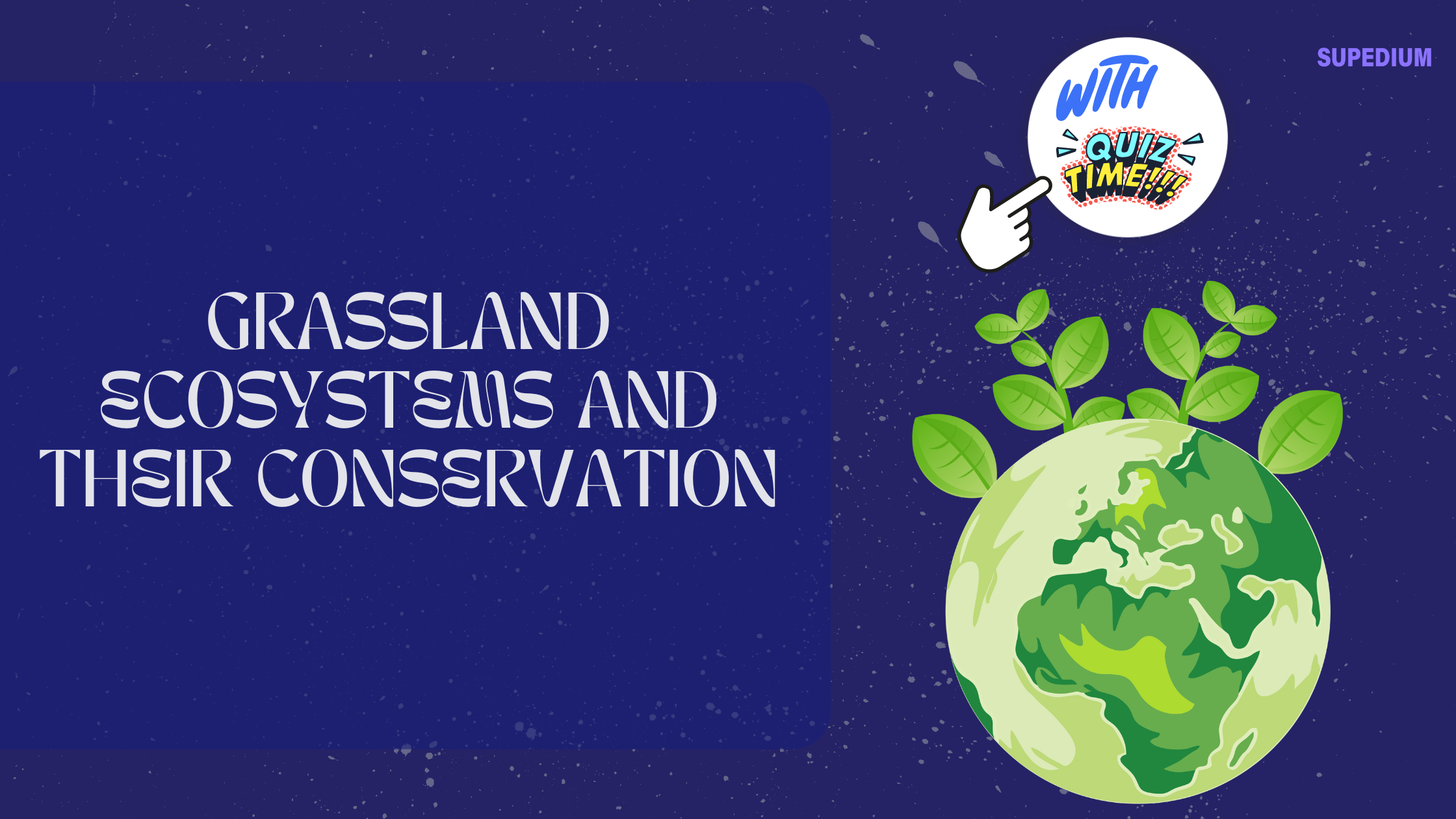Table of Contents
![]()
Grassland ecosystems, characterized by vast open spaces dominated by grasses rather than trees or shrubs, are critical components of the Earth’s ecological systems. They span continents and play vital roles in biodiversity, ecosystem services, and economic activities. This article explores the types of grasslands, their flora and fauna, ecological dynamics, threats they face, and the conservation strategies essential for their preservation.
Types of Grassland Ecosystems
Grasslands are diverse and can be classified into several types based on climate and geographic location:
- Tropical Grasslands: These are found in regions with warm temperatures and seasonal rainfall. Notable examples include the African savannas and the Brazilian cerrado. These ecosystems are characterized by a mix of grasses and scattered trees, providing habitats for a variety of herbivores like elephants and predators such as lions.
- Temperate Grasslands: Found in regions with moderate rainfall and temperature variations, temperate grasslands include the North American prairies and Eurasian steppes. These areas experience distinct seasons, and the vegetation typically includes tall grasses and few trees. Species such as bison and pronghorn antelope are common here.
- Montane Grasslands: Located at higher elevations, montane grasslands are found in places like the Andean páramos and the Tibetan Plateau. These grasslands endure cooler temperatures and often have a unique set of plant and animal species adapted to the higher altitudes.
Flora and Fauna of Grassland Ecosystems
Grasslands are home to a diverse range of species adapted to their specific environments:
- Plant Life: Grasses are the dominant vegetation in grasslands, with species such as bluestem, buffalo grass, and ryegrass playing critical roles. Herbaceous plants and shrubs also contribute to the ecosystem, providing food and shelter for various animals. Plants in grasslands have adapted to cope with periodic fires and drought conditions.
- Animal Life: Grasslands support numerous herbivores, including large grazers like bison, antelope, and zebras. These animals play a crucial role in maintaining the balance of the ecosystem by preventing the overgrowth of certain plant species. Predators such as lions, wolves, and coyotes help control herbivore populations. Invertebrates, including insects and spiders, are also abundant and contribute to nutrient cycling and soil health.
Ecological Processes and Dynamics
Several ecological processes are fundamental to the health and functioning of grassland ecosystems:
- Fire Regimes: Fire is a natural and essential process in many grasslands, helping to maintain ecosystem health by removing dead vegetation and promoting new growth. Many grassland species are adapted to withstand or even thrive after fires, which also help to recycle nutrients back into the soil.
- Grazing and Browsing: Herbivores are integral to grassland ecosystems. Their grazing prevents the encroachment of woody plants and maintains the open structure of the landscape. The patterns of grazing and browsing influence plant species composition and ecosystem dynamics.
- Climate and Weather Patterns: Grasslands are shaped by their climate, including precipitation and temperature. Seasonal changes affect vegetation growth and animal behavior. Variations in climate patterns can significantly impact grassland health and productivity.
Threats to Grassland Ecosystems
Grasslands face several significant threats that jeopardize their health and sustainability:
- Habitat Loss and Fragmentation: Expansion of agriculture and urban development has led to the loss and fragmentation of grassland habitats. This destruction reduces the area available for wildlife and disrupts ecological processes.
- Climate Change: Altered temperature and precipitation patterns affect grassland ecosystems by altering plant growth, shifting species distributions, and increasing the frequency and severity of extreme weather events.
- Overgrazing: Excessive grazing by livestock can degrade vegetation, leading to soil erosion and loss of biodiversity. Overgrazed areas often struggle to recover and can become dominated by invasive species.
- Invasive Species: Non-native plants and animals can outcompete native species, leading to changes in vegetation structure and reduced habitat quality for indigenous wildlife.
Conservation Strategies
Effective conservation of grassland ecosystems requires a multifaceted approach:
- Protected Areas: Establishing and managing protected areas is crucial for preserving grassland habitats. Successful examples include national parks and wildlife reserves that provide refuge for species and help maintain ecological processes.
- Sustainable Land Management: Adopting sustainable agricultural and grazing practices helps to minimize negative impacts on grasslands. Techniques such as rotational grazing and agroecological practices can help restore degraded lands and enhance resilience.
- Policy and Legislation: National and international policies play a vital role in grassland conservation. Regulations and incentives that support conservation efforts, habitat protection, and sustainable land use are essential for safeguarding these ecosystems.
- Community Involvement and Education: Engaging local communities in conservation activities and raising awareness about the importance of grasslands are crucial. Education programs and community-based initiatives can foster stewardship and support for conservation efforts.
Case Studies
- North American Prairies: Conservation efforts in North American prairies have included establishing protected areas and implementing sustainable grazing practices. Despite progress, challenges such as habitat fragmentation and invasive species persist.
- African Savannas: Conservation strategies in African savannas involve managing wildlife reserves, promoting eco-tourism, and working with local communities. These efforts aim to balance conservation with economic development and community needs.
- Asian Steppes: In Mongolia and Kazakhstan, conservation efforts focus on preserving traditional nomadic herding practices and protecting key species such as the Saiga antelope. Restoration projects and international cooperation are critical for addressing threats in this region.
Future Directions and Research
The future of grassland conservation lies in innovative approaches and ongoing research:
- Innovative Conservation Techniques: Advances in technology, such as satellite monitoring and genetic research, offer new tools for managing and protecting grasslands. These technologies help track changes, assess ecosystem health, and support species conservation.
- Integration with Broader Environmental Goals: Grassland conservation is linked to broader environmental objectives, including climate change mitigation and global biodiversity targets. Integrating grassland conservation with these goals enhances the overall effectiveness of conservation strategies.
Conclusion
Grassland ecosystems are vital for biodiversity, ecosystem services, and economic activities. Protecting and conserving these valuable landscapes requires a comprehensive approach that addresses threats, implements effective management practices, and fosters community engagement. As we move forward, a commitment to innovative solutions and collaboration will be essential for ensuring the health and sustainability of grassland ecosystems for future generations.






Be the first to comment